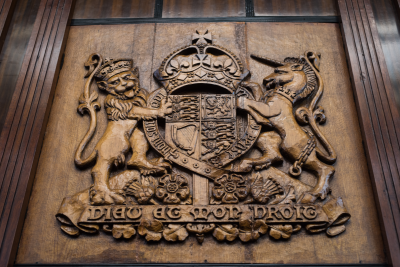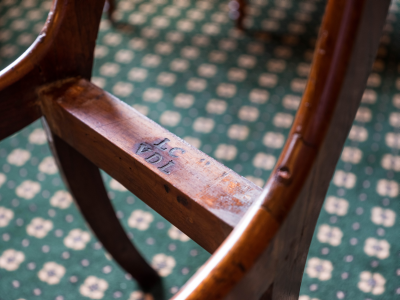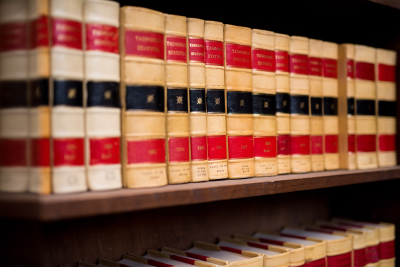Parliament of Tasmania - HAEO - Legal Studies
 House of Assembly Education Office
House of Assembly Education Office
Legal Studies
The Parliament of Tasmania

Coat of arms in the House of Assembly Chamber
The Parliament of Tasmania is modelled on the United Kingdom’s Westminster parliamentary system. Under the Constitution Act 1934, s 10, the Governor of Tasmania, the Legislative Council and the House of Assembly constitute the Parliament of Tasmania. Together they fulfil the Parliament’s four main functions of:
*As Tasmania has a bicameral Parliament based on the Westminster system, the Executive Government forms in the 'lower House', the House of Assembly by the political party/parties which has the support of a majority of Members.
Parliament and Representative Government
As legislated in the Constitution Act 1934, s 18(2) and 22(2), Tasmania has an elected bicameral Parliament. The House of Assembly and Legislative Council, whilst running different election systems and cycles, are elected by the Tasmanian people. Through democratic elections, Tasmanians vote to determine who directly represents them in each electorate of the Legislature and as a State, elect the political party, or parties, that form the Executive.
The Tasmanian Electoral Commission, under the Electoral Act 2004 (Tas), is responsible for running elections for the Parliament of Tasmania, and the Tasmanian Electoral Commission's website contains further information on Tasmanian elections.
Parliament and Executive Government
To ensure the Government of the day is able to administer and deliver government services, it has the power to make laws (legislative), carry out and enforce the laws (executive), and interpret laws and judge whether they apply in individual cases (judicial). To prevent the centralisation of power, these powers are shared across the arms of government. Known as the separation of powers, the Executive, Legislature and Judiciary are each responsible for the administration of their own power whilst acting as a check and balance on the others.
Parliament and ‘Responsible Government’

Original chair frame with the Van Diemens Land stamp
While the Legislative Council was established in 1825, it was not until 1856 that the British colony of Van Diemen’s Land received full self government. In 1856, Van Diemen’s Land then renamed Tasmania, saw the establishment of the 'lower House', the House of Assembly and the beginnings of ‘Responsible Government’.
Responsible Government is a key feature of the Westminster parliamentary system, in which, the Executive is formed within the Legislature, and responsible to the Legislature. Ministers of the Crown are governed by the principle of Ministerial responsibility and directly answer to the Legislature for all matters within their portfolio. The Executive must retain the ‘confidence’ of the House, or the ability to pass legislation, or risk being removed from government.
It should be noted, that with Responsible Government, members of the Executive are simultaneously members of the Legislature, potentially leading to the misunderstanding that ‘Government and Parliament are the same thing’ rather than two separate arms of government. As the sovereign power, the Legislature has practices, procedures and conventions that aim to hold the Executive to account. The Executive is answerable to the Legislature, and in a democracy, the Legislature is ultimately answerable to the people they are elected to represent.
Parliament and scrutiny of the Executive Government
Of the three arms of government, the Legislature is the sovereign power, and the Executive must answer to the Legislature. Ministers of the Crown are subject to the intense scrutiny from the other members of the Legislature. Some of the key practices and procedures of the Parliament of Tasmania that enable direct scrutiny of the Executive include:
In addition, other parliamentary practices that enable some scrutiny of the Executive include:
Legal Studies students may benefit from viewing these practices in action either via an excursion to Parliament House on a sitting day, watching Parliament via the Parliamentary broadcast services or reading Hansard.
Parliament and Tasmanian Statute Law

Tasmanian Statutes
An essential function of the Parliament of Tasmania is to legislate, or pass new or amended Tasmanian laws (Bills). The majority of Bills originate in the House of Assembly, with most Bills introduced by the Minister. This reflects the need for the Executive to seek the approval of proposed government legislation by the Legislature. In practice, most Bills pass the Parliament of Tasmania.
However, it should be noted that Members of the Legislature have the ongoing power to hold the Executive to account when debating and voting on government legislation. Any Bill, including Government Bills, must receive a majority support in both Houses to become an Act of Parliament. The defeat of Government Bills could place enormous political pressure on the Government of the day if it is perceived they have lost the ‘confidence’ of the House or the ability to pass government legislation.
To follow the progress of legislation through the Parliament more information is available on the Current Bills and Historical Bills pages.
Legal Studies Resources
The House of Assembly Education Office has created a range of resources and activities for Tasmanian students studying Legal Studies Foundation or Legal Studies 3.
